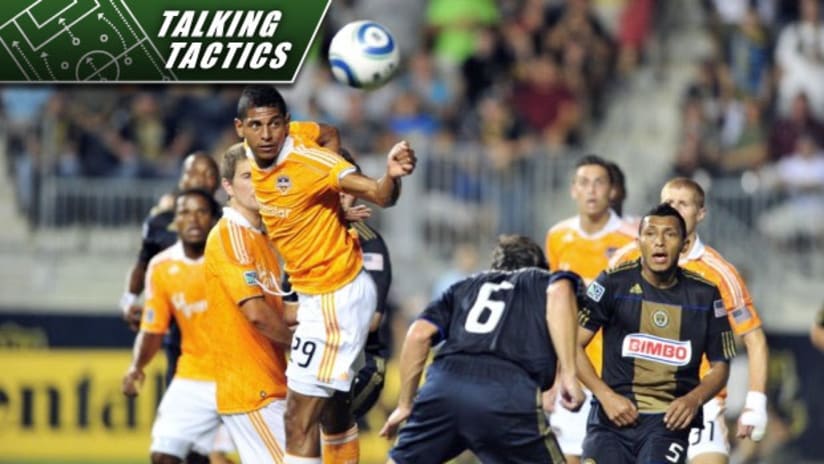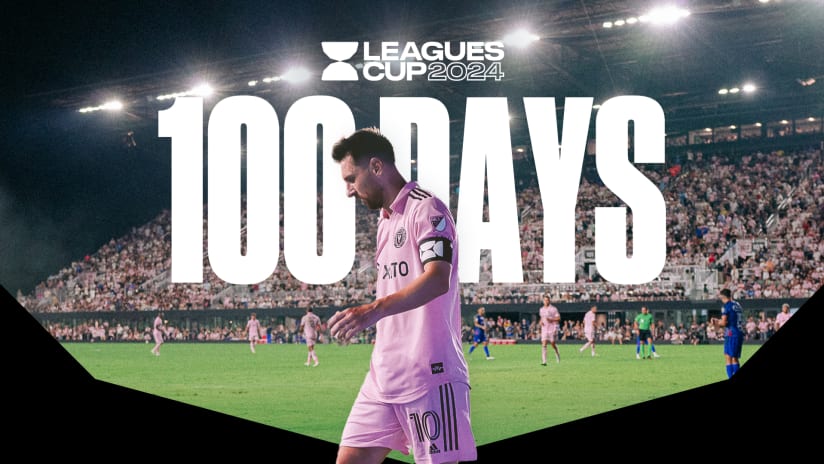October has brought tight playoff races, and we always knew it would. So perhaps it shouldn’t surprise us that October is also landing as a month of low scores in MLS, some of which is the tactical residue of more conservative arrangements.
First, take a quick look at the numbers:
Twenty-four matches in October so far have reaped 53 goals, or just 2.2 per match. Compare that to 2.97 goals per match in September and an even 3 per game in August. So, October has seen a reduction in scoring by about 25 percent over the previous two months – a fairly significant number.
Is it down to what Sir Alex Ferguson would call “squeaky-bum time?” That’s a slightly crude way of saying that things are getting tight. So how, exactly, does that happen?
Playoff Push: Week 32

Some is just down to more conservative habits individually. Fullbacks, for instance, may not get forward as freely, more concerned about giving up the goal that matters while less enamored with serving up the potential game-winner. That serves to reduce chances across the board.
But there also seems to be a specific, tactical response that is contributing to the reduction in October scoring. More managers are opting for a decisively withdrawn striker, one who plays quite a bit further back toward the midfield.
It’s a different look than typical forward pairings in the conventional 4-4-2 that most teams run. And the bottom line here: When teams use their second striker as a playmaker out of midfield, the goal-scoring spigot is being twisted closer to the “off” position.
In more conventional 4-4-2 arrangements, especially for clubs that operate with a diamond-shaped midfield, both forwards will remain higher up the field. Generally, one drops further back, looking to exploit gaps between two banks of defense while also seeking to avoid redundant runs. But they remain strikers in their essential deployment, prioritizing scoring opportunities closer to goal over chances to link and create in midfield.
But lately we’re seeing more teams take a forward and move him further back in the formation, into something closer to a 4-4-1-1. That means the highest central midfielder in the arrangement moves a little further back, assuming a slightly more defensive position as his basic, starting point.
Look at Chivas USA’s arrangement in Sunday’s SuperClasico. Alejandro Moreno, a classic target forward, may have played further back than at any time in his long MLS career. He was picking up balls where central attacking midfielder Nick LaBrocca usually would. In this case, it may have been a decision by Chivas USA manager Robin Fraser to create more space between Moreno and Juan Pablo Ángel, who also favors target-player positions closer to goal.
Either way, whether it was personnel-driven or a tactical initiative (or something in between), the eventual result was a tightly-contested 1-0 win for the Galaxy. There was never an abundance of scoring chances for the Goats.
Across the coast, D.C. United’s Dwayne De Rosario was playing a similar role for his team. As we’ve written before, De Rosario can work as a forward or as an attacking midfielder.
But when he does line up as a forward, DeRo tends to withdraw into the midfield, sniffing out opportunities to create off the dribble while Josh Wolff stations himself closer to goal.
Plus, when De Rosario operates as a forward, Stephen King generally occupies the central midfield role ahead of Clyde Simms. The net has been one fewer forward operating near the opposing goal – and United are getting very few chances these days. Ben Olsen’s men had just one shot on target in last Saturday’s home loss to Chicago (and that was a penalty kick).
Houston are another side where a similar tactical tweak may be responsible for closer, lower-scoring contests. In last Friday’s massive win over Portland at JELD-WEN Field, striker Carlo Costly was in a more withdrawn role than we saw earlier this year from the Honduran frontrunner. The effect was positive for Houston’s passing game and for Costly, who doesn’t have breakaway speed and is probably better as a link between the higher striker and the two central midfielders (rather than looking to run in behind defenders).
And there’s the defensive-minded rub: With Costly further back toward his own goal, the two central midfielders can operate slightly further back in the formation, in a more conservative pose.
Friday’s match, which Houston won 2-0, was yet another with two goals or fewer; six of nine over the weekend had two goals or fewer, while the other three finished with three goals apiece.
This seems to be trendy throughout domestic soccer, not just in MLS. The other prominent match last week in American soccer was the latest US national team contest, a close 1-0 loss to Ecuador. Clint Dempsey is now operating as a recessed striker. Behind him in a position we would usually call “attacking midfielder” was Maurice Edu, who will never be confused for a natural attacking midfielder.
Edu’s instincts are always defensive. So that, along with Edu’s desire to avoid running into Dempsey in central, playmaking areas, subtracts some of the US team’s forward thrust.
By the way, the defensive tactical response to forward-as-withdrawn-playmaker usually involves a holding midfielder being more aware of his tracking duties. So he’s often chasing the other side’s deep-lying forward. That means the other central midfielder gets pulled further back, dropping into those middle areas once his team’s defensive midfielder gets pulled away – which makes for a more defensive game all the way around.
Hence, a contributing factor to a month of close margins and low scores.










